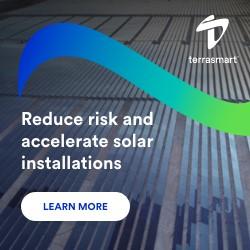New NREL Report Assesses PV Interconnection Potential in New York City
Report evaluates rooftop PV potential, challenges of interconnecting PV to secondary network distribution systems, and solutions for overcoming interconnection challenges
The U.S. Department of Energy (DOE) has teamed with cities across the country through the Solar America Cities (SAC) partnership program to help reduce barriers and accelerate implementation of solar energy. DOE's National Renewable Energy Laboratory (NREL) recently published its assessment of PV interconnection potential in New York City, titled "Interconnecting PV on New York City's Secondary Network Distribution System."
The network distribution systems found in New York City and many other large cities across the United States present some unique barriers not found in interconnection to the more common radial distribution grid. Energy exported from interconnected PV systems can interfere with network protection equipment and reduce grid reliability. The new report takes a significant step toward understanding the issues crucial to PV deployment in cities with network distribution systems.
Working with the New York City SAC team and the local utility, Con Edison, NREL evaluated PV interconnection in New York City. The study indicates tremendous technical potential for rooftop PV systems, and that PV can help New York City meet increasing energy demands with cleaner energy and potentially lower infrastructure costs than conventional generation. It presents challenges, however, because PV interconnection has the potential to export energy onto the distribution network and disrupt network protection schemes. The report reviews concerns associated with interconnecting PV systems to networks, recommends solutions for overcoming these issues, and identifies administrative best practices for efficient PV interconnection.
The results of this analysis can help New York City � and other cities with network distribution systems � plan for greater deployment of rooftop PV systems by identifying areas where PV generation can exceed network load, and by showing when exporting of electricity is most likely to occur. The results may assist the utility in evaluating future PV interconnection applications and in planning future network protection system upgrades. This study may also aid other utilities interconnecting PV systems to networks by defining a method for assessing the technical potential of PV in the network and its impact on network loads.
The full report "Interconnecting PV on New York City's Secondary Network Distribution System" may be downloaded from NREL's publications Web page.
Featured Product

